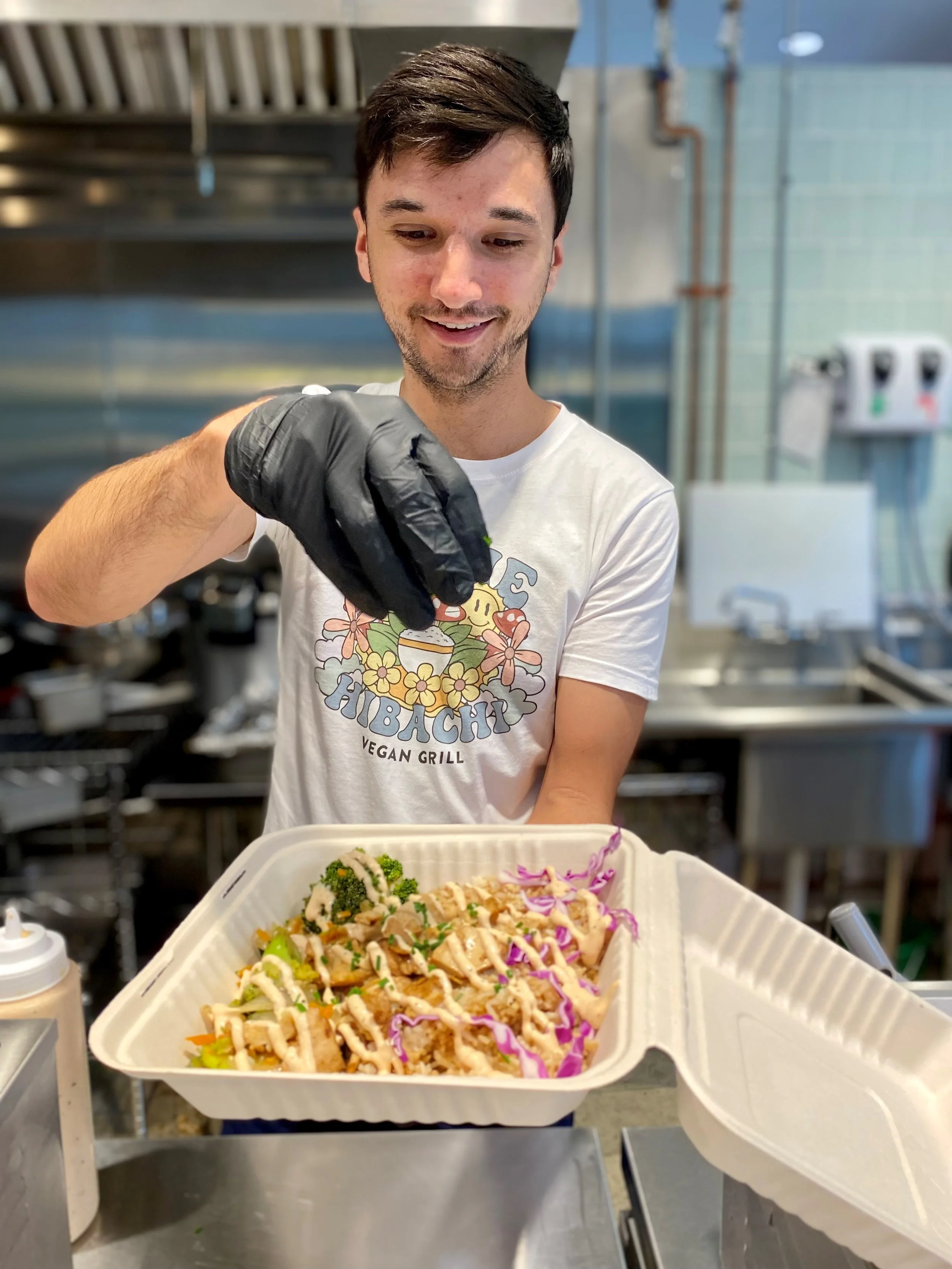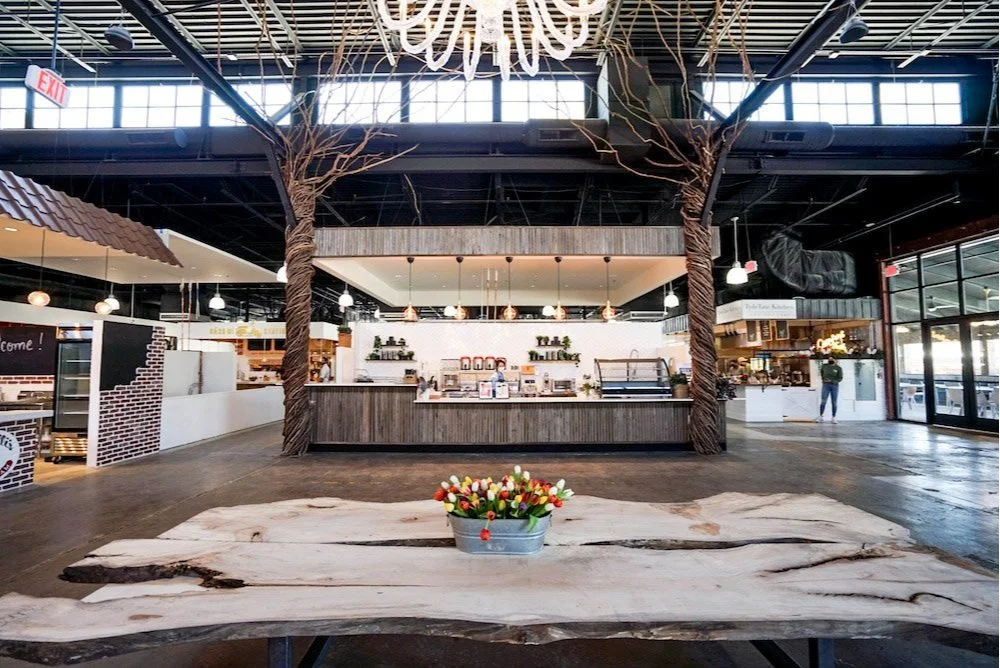Why Atlanta is Fertile Ground for more* Food Halls
*ones that bring a unique offering to the market and don’t start to look like the food courts of the mid-1990s.
You may have read Beth McKibben’s article on eater.com about food halls in Atlanta being here to stay. Having curated five food halls over the last three (3) years in three different states, we have a thing or two to add for those customers and diners that may not know how each has its own structure of operations and management. Here’s our take on what makes a thriving food hall in the eyes of a consumer:
Start Up Concepts: In our time working on Chattahoochee Food Works, we loved the passion that each of the vendors brought forth not only in their food, but also in their story of how their operation in the food hall came to be. Let’s take Josh Brock of Hippie Hibachi for example. He is good friends with Baked Kitchen’s founder, Allan Katzef, and was introduced to us as a vegan operator for the market. Josh had not opened, nor operated a brick and mortar location, but after tasting his food and hearing his love of vegan cuisine, we invited him to be a vendor. To date, his use of social media and his loyal following helps fuel the traffic at Chattahoochee Food Works.
Term Commitments: When Krog Street Market was the first food hall to open in Atlanta, it opened to tremendous praise. Development at the time approached deals as leased space. Many of the operators had previous experience in operations and most signed at least five (5) year leases. Longer terms mean that vendors are committed to the space and there’s limited turn over unless a vendor closes for business. Ponce City Market was the second food hall in Atlanta to open and many of these spaces were secured longer term commitments by established operators. Chattahoochee Food Works and Politan Row lead with 1-3 year commitments so that the emerging chefs and operators have time to grow and mature. If sales are strong, the vendors here are invited to stay and renew.
*Photo Credit: Wendell Brock
Cultural and Social Nexus: One of my favorite parts of a food hall is how everyone in the family or dining group can get what they want to eat OR if they’re feeling adventurous, order a few different dishes and share with friends. Early in the curation of Chattahoochee Food Works, we invited the chefs/vendors that were already engaged to join us for tasting of future vendors. It was our way of ensuring that the vendors knew they were operating as a team.
Innovation and Collaboration: Early on, we noticed that our Indian cuisine vendor would collaborate with our Ramen operator to add a fusion special that included unique spices and seasonings. Breaking bread over a meal, with either fellow vendors or guests, is something that should be celebrated at every market/food hall!
Operational Structures: There are multiple ways to structure a food hall. Some operators sign a master lease and then license or sublease stalls to vendors with terms between 1-3 years. Other owners lease the stalls in a traditional Lease model with terms for 5-10 years. Other food halls are set up as a management agreement between the owner of the property and a group that runs the food hall and choses the vendors themselves. Management groups, like the master lease holder are usually the ones running the bar(s), securing corporate events and coordinating activations to bring additional foot traffic to the space.
Economic Consideration: For many emerging brands, the costs to open a full brick-and-mortar location in about 2000 SF will cost an operator from $500K-$1.2M to build-out the space. The lower number is for 2nd generation restaurants and the high number is for brand-new construction. Many vendors we’ve spoken with over the years appreciate being with other vendors and together with the operator of the food hall, the businesses all drive traffic to the location. A free-standing location for an operator means that they are doing 100% of the marketing to drive traffic to their location. In a typical restaurant space, owners pay 5-10% of their expected sales in rent. In a food hall space, vendors share common area seating, janitorial, HVAC, marketing and should only have to worry about their employees, food costs and ticket times. Since many responsibilities are off their shoulders, Food hall operators often have a 12-20% rent factor for operating in a food hall. Their employees appreciate not having to clean toilets or wipe down tables. The crew is there to build relationships with their customers and kick-out amazing food day in and day out.
Construction and Layout: Both Politan Row and Citizens Market in Atlanta have shared kitchens. Politan Row is unique, as it was designed with 5 non-hooded stalls that have access to and use the shared kitchen. The remaining 5 stalls have micro kitchens. While many chefs are able to play nice in the kitchen, we found that the stalls with their own kitchen leased up much faster than the non-hooded stalls. At Citizens Market, the food hall at Phipps Plaza, there are two shared kitchens and a management company that runs the entire food hall. From a customer perspective, you can chose to have food from Dani Garcia, Masaharu Morimoto of Iron Chef fame, Shimi Aaron, and Italian chef and master butcher Dario Cecchini. Are you ever going to see any of these chefs behind the counter? No. My biggest question is, if any Atlantans know and appreciate the recipes coming from these culinary masters?
Flow and Design:
I am blessed to have visited Time Out Market in Lisbon, Grand Central Market in LA, Union Market in DC, it’s fascinating to see the difference in the design and layout of these markets. Many of them are a U shape with the food around the edges and a bar or seating in the middle (Politan Row, Time Out Lisbon). I find the most intriguing are the ones with lanes, that encourage you to be curious, to peak around the corner to see what’s next (Grand Central, Chattahoochee Food Works).
Food Hall Magic: Location, Community Engagement, Audience Target and Design/Flow/Construction and Operations.
The terra alma team was asked to handle vendor selection and marketing for a food hall in Metro Atlanta where the operator wanted to run the location like a full-service restaurant with 9 unique chef offerings. With over 450 seats and lack of previous experience, we quickly knew that the operator was not going to make it. We stepped away from the project a year before opening and upon opening, signs were clear, it was not going to last long. Forty-five days after opening, it closed. Guests want to see the chefs in the kitchen, they are lured in to purchase the dish with the show. Food halls are successful because they bring entertainment and interaction, AND people want to see people (*design/flow/sight lines).
In the food hall circus of flavors, the small business owners are the tightrope walkers, the jugglers, and the fire-eaters all rolled into one. They bring the heart, the innovation, and the authenticity that make the food hall experience truly special. And as the curtain falls on this culinary spectacle, it's often the local legends that leave you craving an encore.




